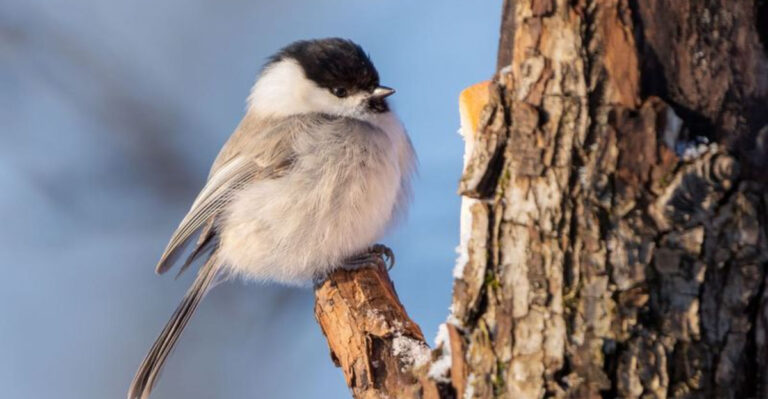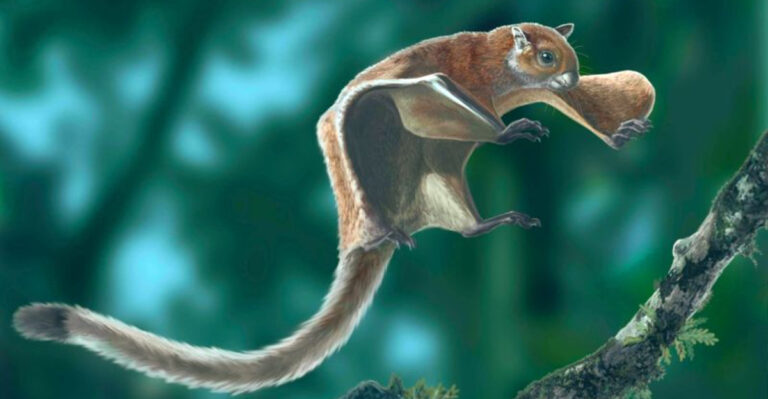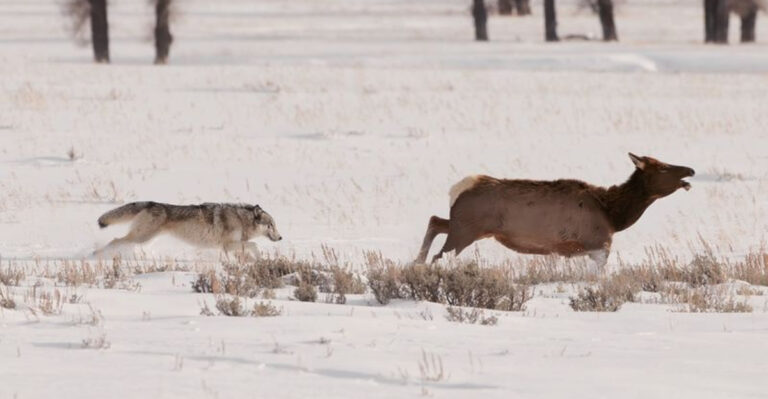15 Reasons The Sand Cat Rules The Desert Like A True Feline King
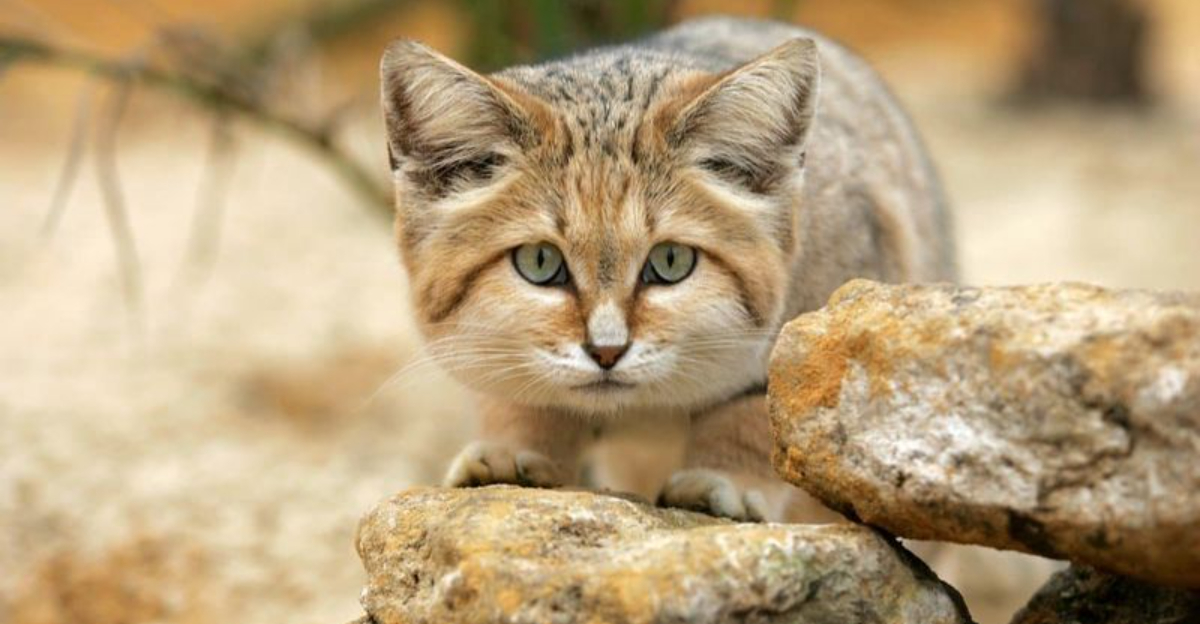
Hidden in the vast, scorching deserts across North Africa and Central Asia lives a small but mighty survivor – the sand cat.
These remarkable felines thrive where few animals dare to venture, conquering extreme temperatures and harsh conditions with specialized adaptations.
Their desert mastery isn’t just impressive; it’s a masterclass in evolution that puts them at the top of their sandy kingdom.
1. Masters Of Disappearing Acts
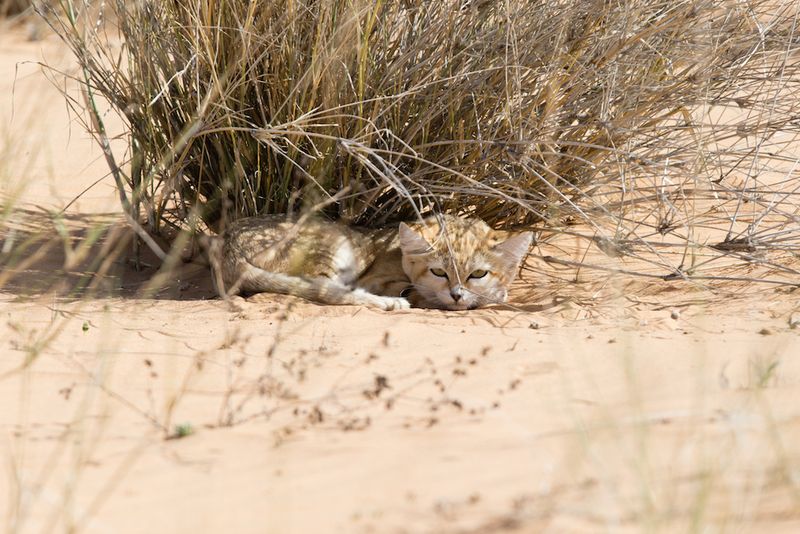
Blink and you’ll miss them! Sand cats have perfected the art of vanishing by flattening their bodies against the desert floor when danger approaches.
Their sandy-colored coats blend seamlessly with the surroundings, making them nearly invisible to predators and researchers alike. Even dedicated scientists struggle to spot them in their natural habitat despite years of training.
2. Water? Who Needs It!
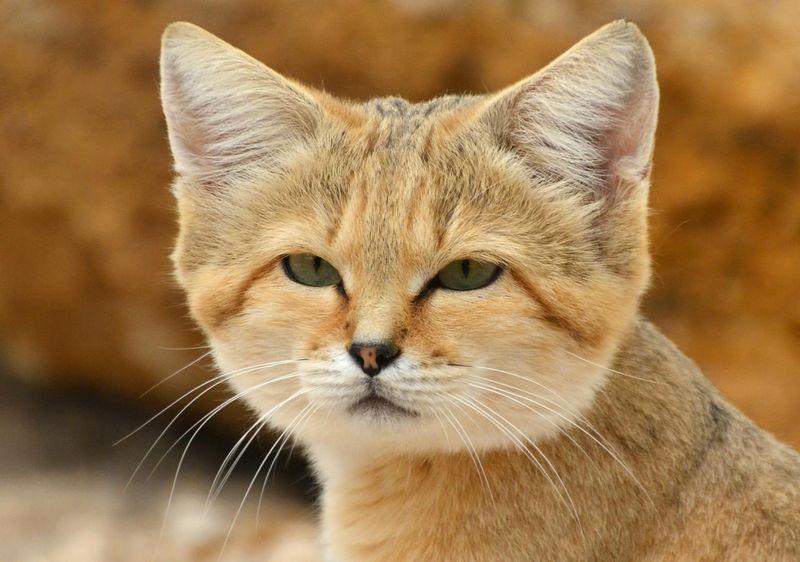
Forget carrying water bottles! Sand cats rarely drink actual water in the wild. Instead, these clever felines get nearly all their moisture from the prey they catch.
Their specialized kidneys produce highly concentrated urine, conserving every precious drop of moisture. This remarkable adaptation means they can survive in places where water sources may be dozens of miles apart.
3. Built-In GPS Navigation System
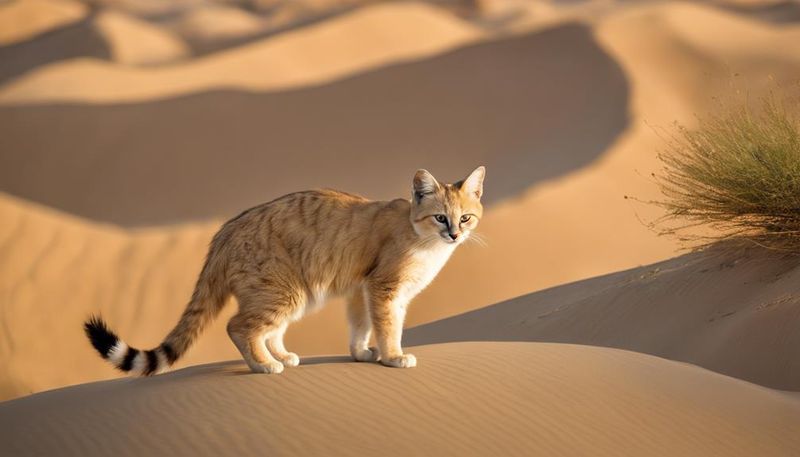
Wandering through endless sand dunes would confuse most creatures, but not the sand cat! Their internal navigation system helps them remember hunting grounds and den locations across vast, featureless landscapes.
Using subtle landscape markers and possibly even star positions, these feline navigators travel miles across their territory and always find their way back home. No compass or smartphone required!
4. Super-Powered Desert Hearing
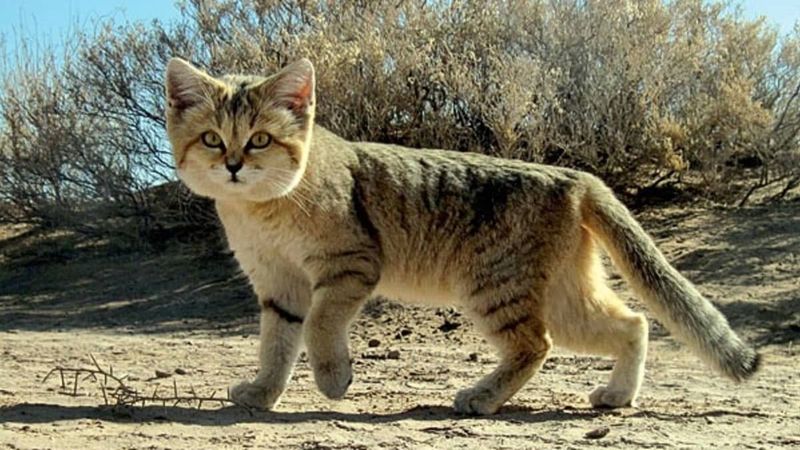
Move over, Superman! Sand cats can detect prey moving underground from over 30 feet away thanks to their oversized ear canals.
Those adorably large ears aren’t just cute – they’re precision instruments that pick up the faintest rustling of rodents beneath the sand. When hunting, they’ll freeze completely still, turning their satellite-dish ears to pinpoint dinner’s exact location before pouncing.
5. Temperature-Regulating Fur Coat
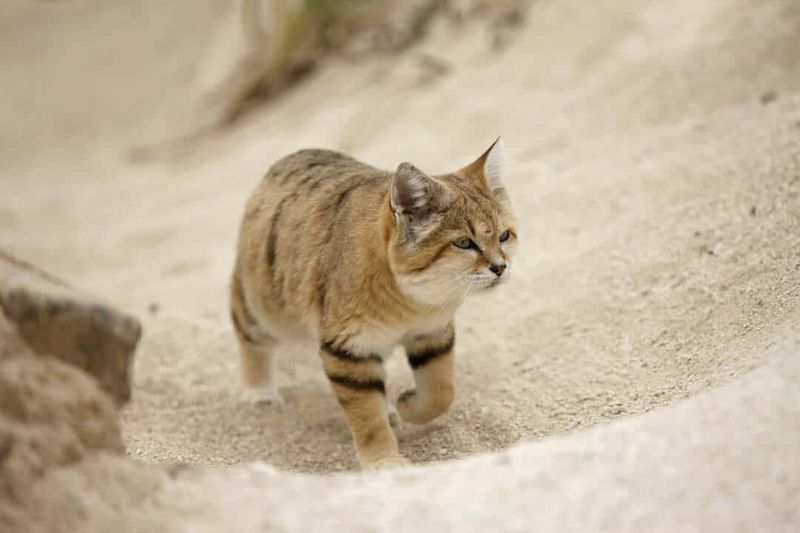
Their thick, plush fur works like a high-tech thermostat. During freezing desert nights, it provides crucial insulation against temperatures that can drop below freezing.
When the scorching sun returns, that same coat reflects heat away from their bodies. Unlike humans who need to pack different outfits for temperature changes, sand cats wear their all-season gear 24/7!
6. Silent Stalkers Of The Dunes
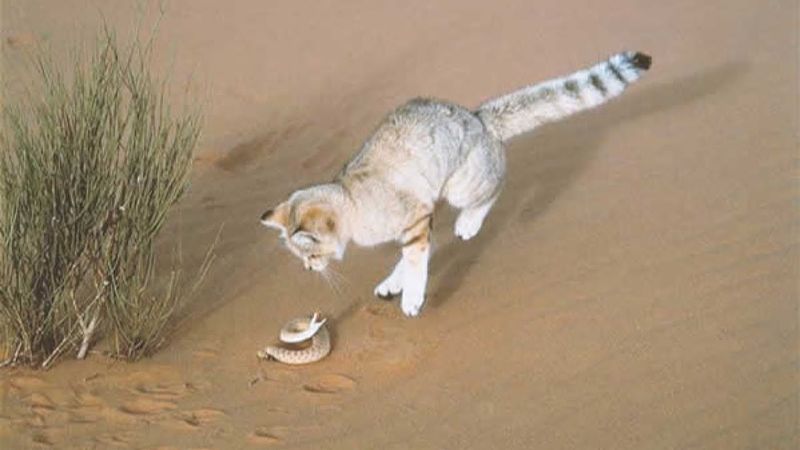
Silent as moonlight on sand, the sand cat stalks its prey with near-invisible grace. Each step is carefully placed, leaving barely a trace behind.
Patience builds tension until the moment strikes, and then it’s all speed and precision. Few desert hunters can match the finesse packed into such a small, elusive package.
7. Desert Architects Extraordinaire
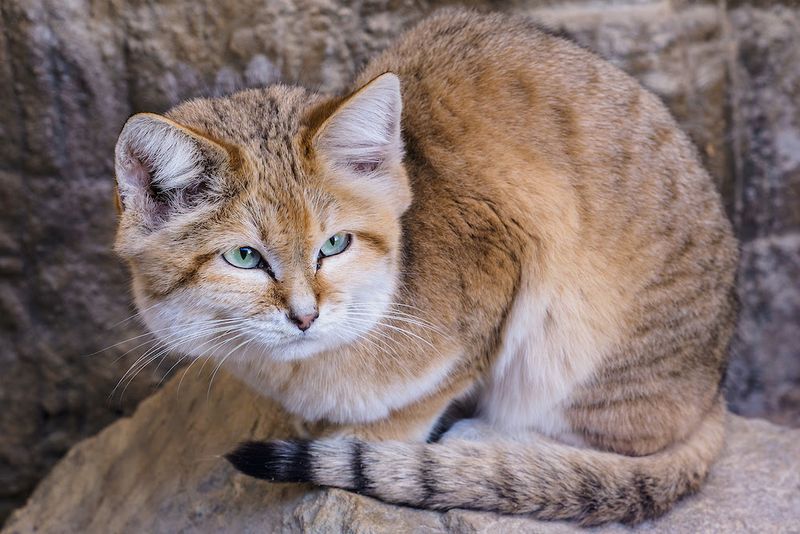
Forget fancy houses! Sand cats create engineering marvels by digging burrows up to 10 feet deep to escape extreme temperatures.
These underground retreats maintain surprisingly stable temperatures despite the wild swings outside. Some burrows feature multiple exits for quick escapes and separate chambers for different activities – essentially desert mansions designed by nature’s cutest architects.
8. Marathon Travelers Without Water Breaks
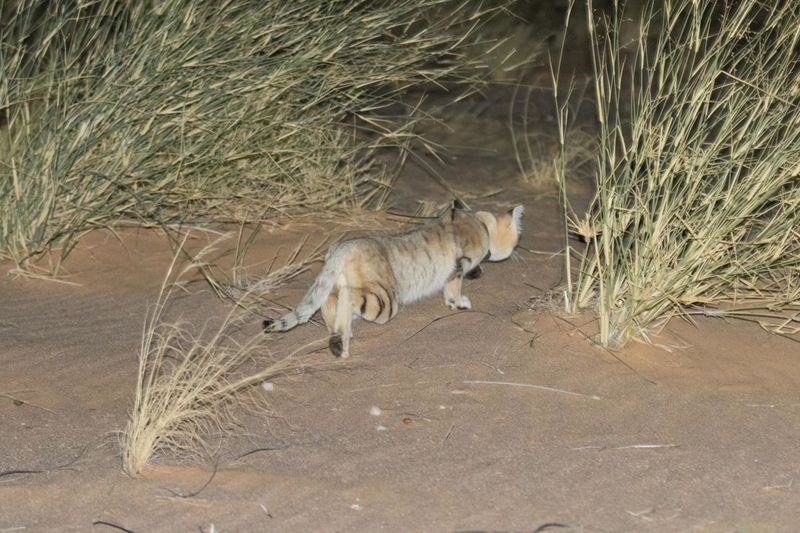
While most cats prefer lounging around, sand cats regularly journey up to 10 miles nightly across harsh terrain in search of food. No water bottles, no rest stops, no problem!
Despite weighing just 4-8 pounds, these mighty travelers cover territories spanning several square miles, navigating through some of Earth’s most unforgiving landscapes.
9. Sand-Proof Eye Protection
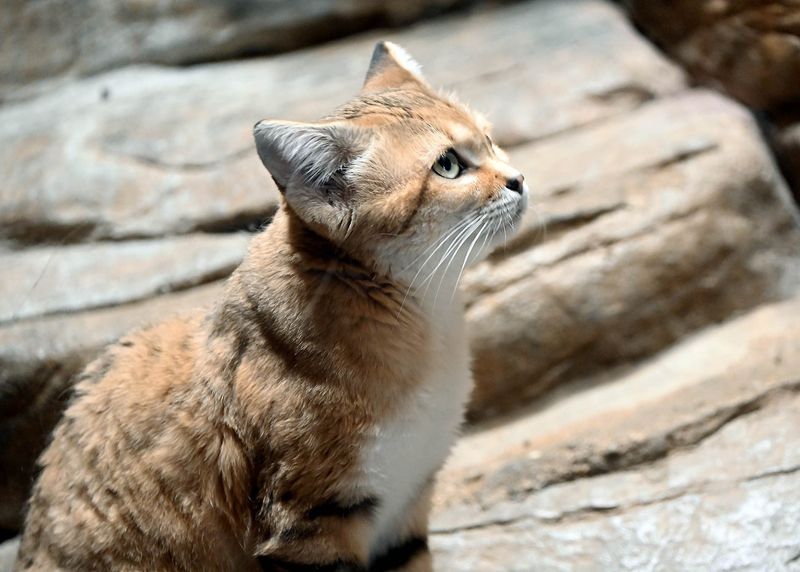
Sandstorms that would send humans running for cover? Just another Tuesday for the sand cat!
Their eyes feature a special third eyelid and naturally occurring tear ducts that continuously flush out sand particles. These built-in goggles protect their vision during fierce desert storms while still allowing them to hunt and navigate. Mother Nature’s desert eyewear puts our sunglasses to shame!
10. Extreme Temperature Tolerance Champions
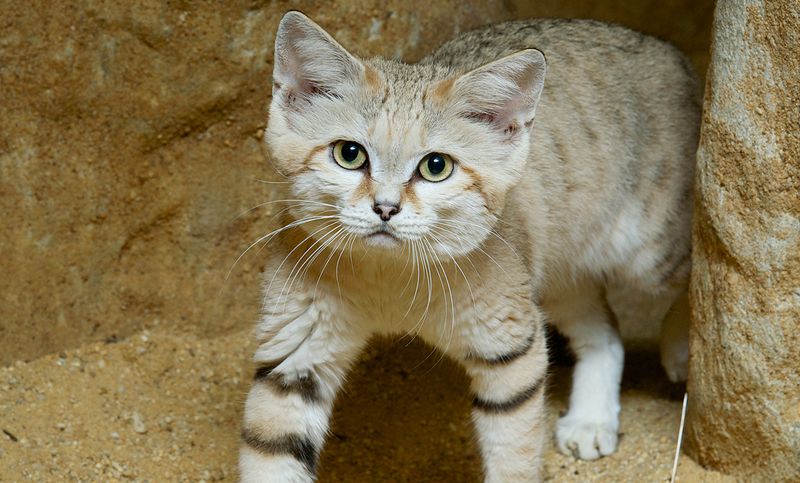
Weather extremes don’t faze the sand cat one bit. Blistering heat by day and bone-chilling cold by night are just part of the routine.
A unique metabolism keeps things steady while dense fur traps warmth when the desert goes dark. Few animals shrug off such wild temperature swings with the same effortless cool.
11. Low-Water Grooming Routine
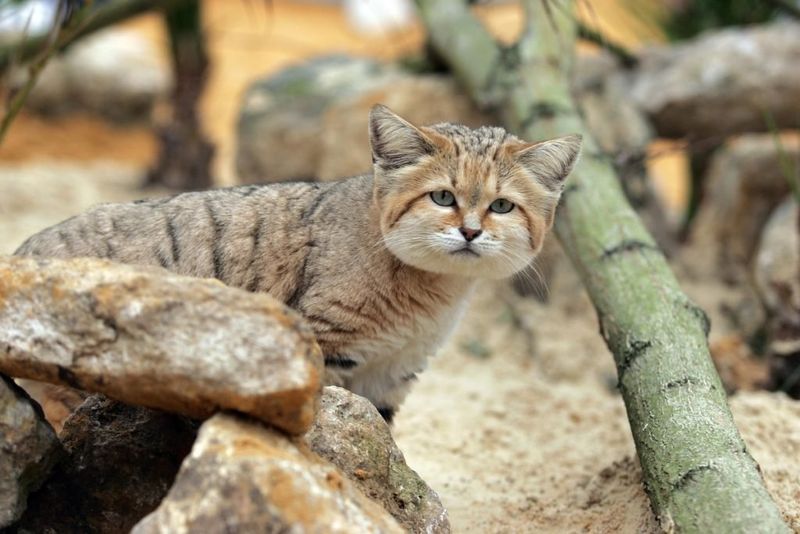
Desert living requires water conservation, so sand cats developed a special grooming technique that cleans without wasting precious moisture. Their rough tongues remove sand and debris while distributing natural oils.
This waterless cleaning system keeps their fur in top condition despite the harsh environment. Even more impressive, this grooming routine helps regulate body temperature by adjusting how much insulating air is trapped in their fur.
12. Social Distancing Original Inventors
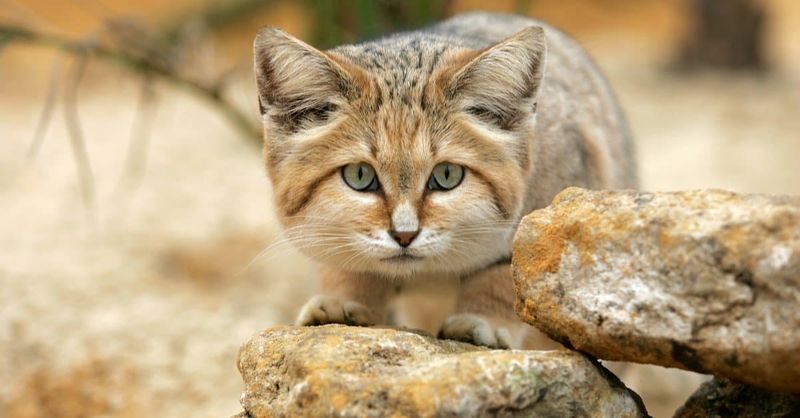
Social distancing comes naturally when you’re a sand cat. Miles of desert stretch between individuals who rarely need company to thrive.
Life out here rewards the lone ranger, not the pack. A yowl or a scent mark is often all it takes to signal presence and claim space.
13. Night Vision That Outshines Technology
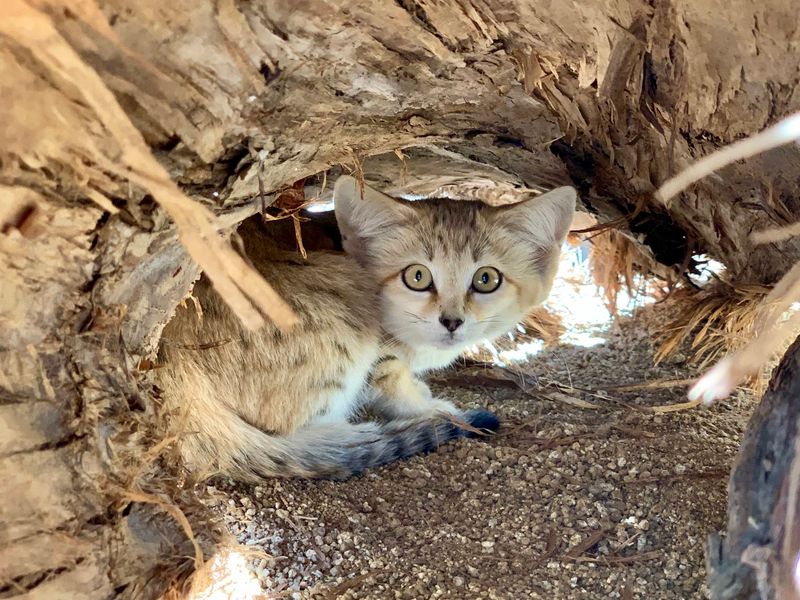
Forget expensive night vision goggles! Sand cats see six times better than humans in darkness, turning pitch-black desert nights into prime hunting time.
Their incredible eyes feature a reflective layer behind the retina that maximizes available light. Combined with vertically-slit pupils that can open extraordinarily wide, these natural night-vision specialists navigate their world when temperatures drop and most predators are struggling to see.
14. Ultimate Survivors Against All Odds
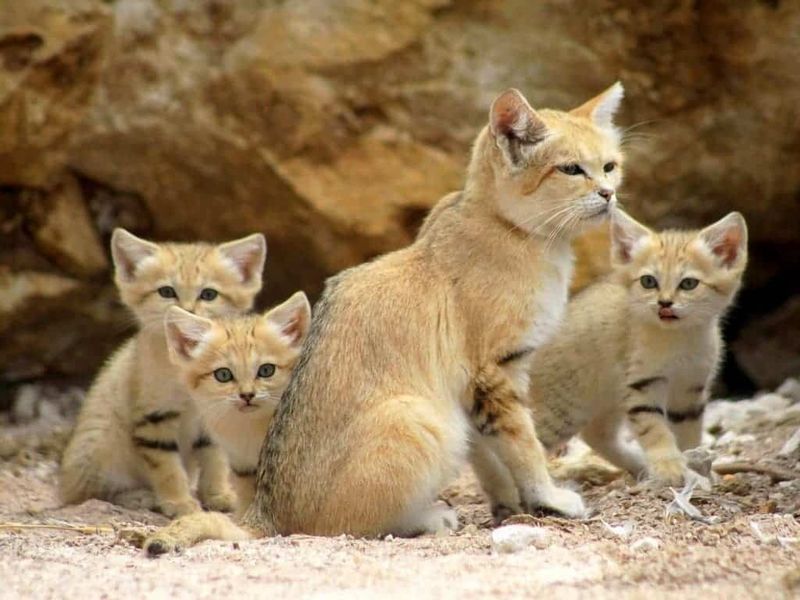
While many species struggle with changing environments, sand cats have maintained their desert kingdom for thousands of years despite increasing challenges.
Their specialized adaptations represent one of nature’s most successful evolutionary stories. Though currently facing habitat loss in some regions, these resilient desert masters continue to prove that sometimes the most powerful creatures come in small, furry, perfectly-adapted packages.

